When choosing bike navigation wearables, you’ll want multi-satellite GPS support (GPS, GLONASS, BeiDou, Galileo) for accurate positioning, especially in challenging environments. Prioritize devices with at least 12 hours of battery life—GPS watches offer up to 320 hours while bike computers provide cycling-specific features like real-time rerouting. Look for AMOLED or transflective LCD displays that remain readable in sunlight, dual wireless compatibility (Bluetooth/ANT+), and turn-by-turn navigation with offline mapping capabilities. Understanding these key specifications helps you make an informed decision.
Essential GPS and Mapping Features for Cycling Navigation
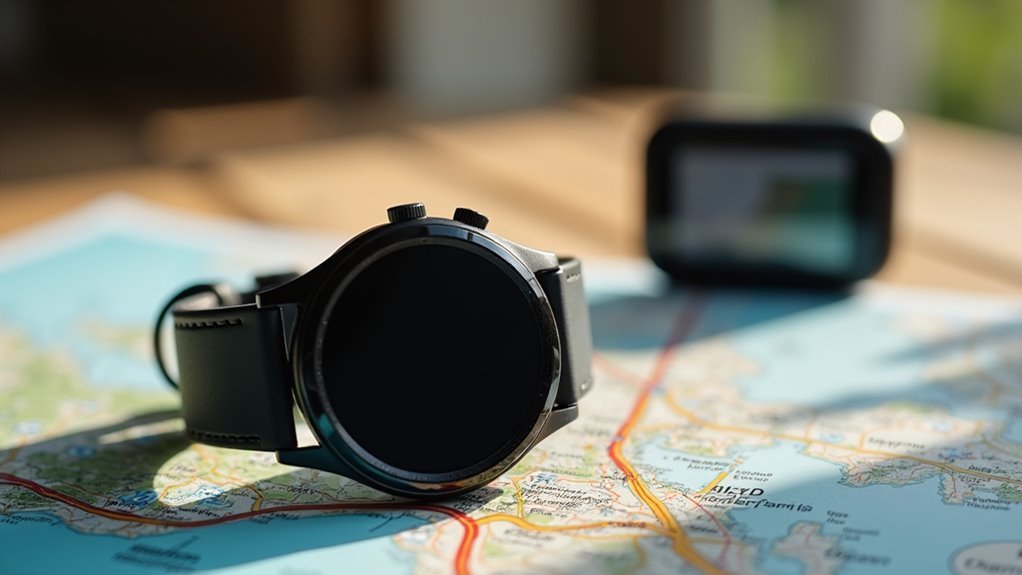
When you’re traversing unfamiliar cycling routes, reliable GPS and mapping features become the backbone of your ride experience. You’ll want a device that leverages multiple satellite systems—GPS, GLONASS, BeiDou, and Galileo—for enhanced positioning accuracy and redundancy.
Multi-band GNSS technology proves essential when you’re maneuvering through dense urban areas or wooded trails where signal reception becomes challenging.
Multi-band GNSS ensures reliable positioning accuracy through challenging terrain where traditional GPS signals struggle to penetrate effectively.
Look for color touchscreen displays with sufficient resolution to show detailed maps alongside your ride data. Key features include zoom and pan functions, offline map storage for remote rides, and real-time elevation profiles.
Advanced devices offer turn-by-turn navigation with automatic recalculation if you go off-course, plus integration with local route databases that suggest popular cycling paths for safer, more enjoyable rides. Premium cycling computers provide seamless data transfer to popular platforms like Strava, allowing you to analyze your navigation performance and share routes with fellow cyclists.
Battery Life Considerations for Long-Distance Rides
While GPS accuracy and mapping features capture much attention, battery life ultimately determines whether your navigation device will guide you home or leave you stranded mid-ride.
You’ll need at least 12 hours of battery life for most long-distance cycling. The Coros Dura leads with 70 hours in dual-frequency mode, while the Bryton Rider 420 offers 35 hours on black-and-white displays.
Solar charging extends ride time considerably—one hour of direct sunlight adds up to two hours of usage on compatible devices.
You can maximize battery life by turning off unused sensors, reducing display brightness, and pre-loading maps. Modern bike computers generally last a week on a single charge with regular use between long rides.
Verify your device works with USB power banks for on-the-go charging, and remember that full navigation features drain batteries faster than basic breadcrumb trails.
Display Quality and Readability in Various Conditions
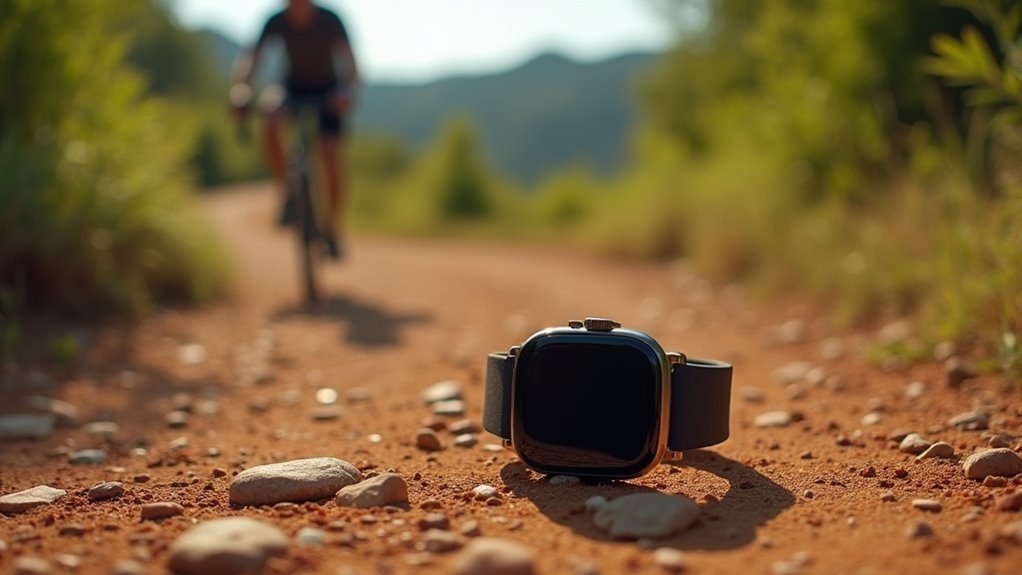
Though battery life gets your device to the destination, display quality determines whether you can actually read the directions once you’re there. AMOLED screens deliver exceptional contrast and vivid colors that remain visible in bright sunlight, making them ideal for demanding conditions.
Display clarity matters more than battery capacity when you’re squinting at navigation directions under blazing afternoon sun.
TFT displays offer a solid balance between visibility and power efficiency, while transflective LCDs provide sunlight readability without draining your battery.
You’ll want adjustable brightness settings and anti-glare coatings to combat harsh outdoor lighting. Larger screens (3.5+ inches) display more data fields simultaneously, though smaller options prove more aerodynamic.
Consider touchscreen versus button navigation based on your glove preferences and weather exposure. Customizable layouts let you prioritize critical metrics, while proper field spacing prevents confusion when you’re reading data mid-ride. Many cycling wearables now feature breadcrumb-style routing for simple terrain navigation, though routes typically need to be pre-loaded for optimal functionality.
Device Types: GPS Watches Vs Bike Computers Vs Smartwatches
Your choice between GPS watches, bike computers, and smartwatches fundamentally shapes your cycling navigation experience, as each device type brings distinct advantages and trade-offs to the handlebars.
GPS watches excel with multiple satellite systems, dual-frequency GNSS chipsets, and exceptional battery life up to 320 hours, making them ideal for long-distance cycling and outdoor adventures. Most watches maintained accuracy within 1-3% of actual measured distance when tested across challenging terrain and canyon environments.
Bike computers offer cycling-specific optimization with crystal-clear touchscreens, real-time rerouting, and thorough ride analytics through integrated sensors. They’re purpose-built for serious cyclists who demand specialized performance tracking.
Smartwatches provide versatility beyond cycling, combining basic navigation with smartphone integration, music apps, and health monitoring. However, they typically sacrifice specialized cycling features and battery life for aesthetic design and everyday functionality.
Compatibility With Cycling Sensors and Accessories
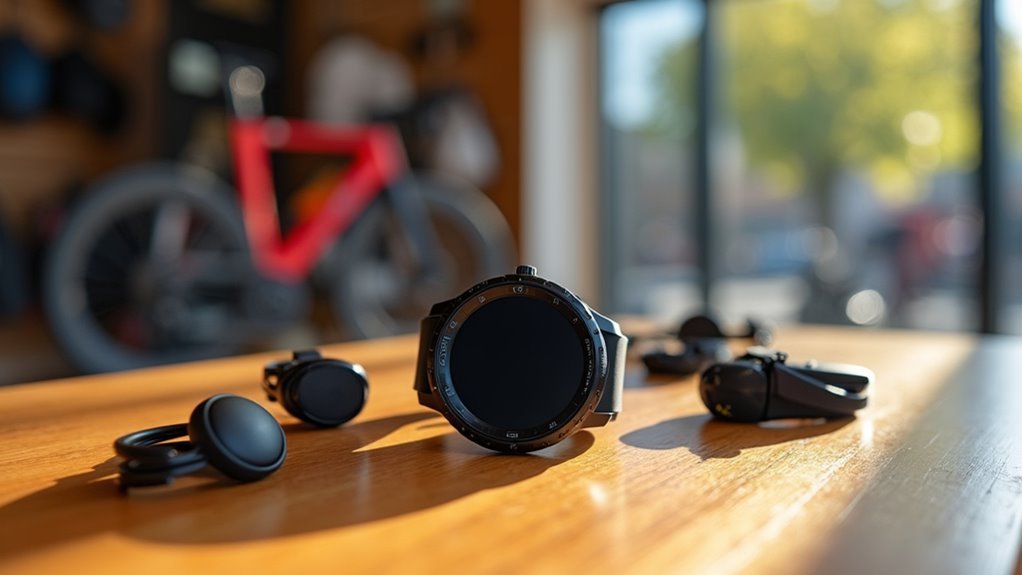
Seamless integration between your navigation wearable and cycling sensors transforms basic ride tracking into thorough performance analysis. You’ll want dual-band wireless capability supporting both Bluetooth Low Energy and ANT+ protocols for maximum compatibility across sensor brands.
| Sensor Type | Primary Protocol | Key Benefits |
|---|---|---|
| Speed/Cadence | ANT+ or BLE | Core performance metrics |
| Heart Rate | ANT+ or BLE | Fitness zone monitoring |
| Power Meters | ANT+ or BLE | Training intensity data |
| Radar Safety | Proprietary/BLE | Vehicle detection alerts |
| Smart Lights | BLE | Automated visibility control |
Check your wearable’s protocol support before purchasing sensors. Modern devices typically handle multipoint connections, letting you sync simultaneously with your smartphone and computer. Consider battery life, waterproof ratings, and installation ease when selecting compatible accessories for your setup. Advanced sensors now feature dual mode capability, allowing you to switch between speed and cadence measurement functions within a single device for enhanced versatility.
Turn-by-Turn Navigation and Route Planning Capabilities
You’ll want navigation wearables that provide crystal-clear turn-by-turn directions with real-time route guidance to keep you on track during rides.
Advanced route planning features let you customize your journey based on terrain preferences, distance goals, and cycling conditions before you even start pedaling. The most capable devices feature multi-band GNSS technology that delivers accurate positioning even under challenging conditions like dense tree cover or urban environments.
Offline map storage guarantees you won’t lose navigation capabilities when cellular coverage drops, making it essential for remote cycling adventures.
Real-Time Route Guidance
When you’re maneuvering unfamiliar cycling routes, real-time route guidance becomes essential for maintaining direction and discovering ideal paths.
Modern navigation systems like Komoot and BikeMap deliver turn-by-turn directions that keep you on track without constantly checking your device. These apps integrate GPS technology for precise location tracking, while devices like Garmin and Hammerhead provide seamless navigation experiences.
You’ll benefit from voice alerts that guide you hands-free, allowing you to focus on riding safely. Many apps offer offline maps, ensuring navigation works even in areas with poor connectivity.
Real-time tracking features in Strava and Map My Ride let you monitor progress and adjust routes instantly. Advanced platforms utilize user activity heatmaps to generate the most popular and well-traveled cycling paths in your area. Choose devices with clear notifications and alerts for upcoming turns to maintain your course effortlessly.
Advanced Route Planning
Advanced route planning transforms basic navigation into a thorough cycling strategy tool that goes far beyond simple point-to-point directions.
You’ll want wearables that sync with extensive route planning platforms, allowing you to create custom routes with personalized waypoints and points of interest. Look for devices that display detailed elevation profiles, helping you match routes to your fitness goals while identifying challenging climbs ahead of time.
The best navigation wearables integrate with community route libraries, giving you access to proven trails and popular cycling paths. Many advanced devices provide estimated time calculations that update automatically as you add control points, using your saved ride history to deliver personalized timing information for better route planning.
You’ll benefit from cue sheet generation for complex routes and event planning tools for group rides. Cross-platform compatibility ensures your planned routes transfer seamlessly between your smartphone, computer, and wearable device, maintaining flexibility throughout your planning process.
Offline Map Storage
Where will you find yourself when cellular towers disappear and data connections become unreliable? You’ll need robust offline map storage that doesn’t leave you stranded on remote trails.
Choose wearables with sufficient internal storage for extensive regional downloads—vector-based maps consume less space and battery than traditional tile-based systems.
Consider devices supporting expandable storage through microSD cards, especially for multi-day tours requiring extensive map libraries. GPS bike computers with built-in memory reduce smartphone dependency, preserving your phone’s battery for emergencies.
Download maps at your required zoom levels before departing, as cached tiles need careful management to prevent navigation gaps. Some devices offer contour lines that help you compare hills and climbs on different routes, making elevation planning more precise for challenging terrain.
Budget devices with limited storage may struggle with large offline files, so prioritize storage capacity when selecting your navigation wearable for serious cycling adventures.
Offline Mapping and Weather Resistance Requirements
When you’re cycling in remote areas without reliable cell coverage, your wearable’s offline map storage capacity becomes critical for maintaining navigation capabilities.
You’ll need to evaluate how much regional map data each device can store locally and whether it supports expandable storage options.
Additionally, you must consider waterproof rating standards since your wearable will face rain, sweat, and potentially harsh weather conditions during extended rides. Look for devices that are 100% water-tight and specifically designed to withstand the demanding conditions of off-road cycling adventures.
Offline Map Storage Capacity
Storage capacity becomes the defining factor when you’re selecting a bike navigation wearable for offline mapping adventures.
GPS watches now offer up to 32GB of dedicated storage, specifically engineered for extensive map files and route data. You’ll find vector-based mapping apps like Maps.ME consume minimal space while covering large areas, unlike traditional raster-based maps that require considerably more storage for similar coverage.
When choosing your device, consider how much regional coverage you’ll need.
Smartphones can quickly fill up with high-resolution offline maps, potentially affecting performance on older models. Dedicated GPS devices excel here with optimized memory management and preloaded base maps.
You’ll want selective downloading capabilities to optimize storage by saving only required map areas for your cycling adventures. Modern bike computers with GPS navigation capabilities provide reliable route planning features that complement offline mapping functionality.
Waterproof Rating Standards
How thoroughly will your bike navigation wearable withstand the elements during your most challenging rides? Understanding waterproof rating standards helps you select devices that’ll survive rain, splashes, and accidental submersion.
IP ratings use two digits: the first indicates dust protection, while the second measures water resistance. You’ll want IPX6 for heavy rain protection or IPX7 for temporary immersion up to one meter. IPX8 exceeds typical cycling needs but enhances durability.
ATM ratings measure pressure resistance at specific depths. A 5 ATM rating withstands water pressure equivalent to 50 meters depth, making it swim-proof and excellent for wet weather cycling. Manufacturers may not list both ATM and IP ratings, leading to uncertainty about your device’s actual water protection capabilities.
Combining both rating systems provides clearer protection indicators.
However, consider real-world sealing quality, port covers, and temperature resistance beyond basic ratings when choosing your device.
User Interface Design and Ease of Operation While Riding
While cycling demands your primary attention on the road ahead, bike navigation wearables must deliver critical information through interfaces that you can process in milliseconds.
You’ll need devices with page-based models that organize essential data into distinct, easily digestible screens. Look for clear visual hierarchy where critical information like speed, distance, and turn directions stand out prominently.
Choose wearables with intuitive controls you can operate without looking down—gesture navigation or large, accessible buttons work best. Natural gesture recognition creates a familiar experience that reduces the learning curve for cyclists transitioning between different wearable devices.
Audio feedback becomes invaluable for turn-by-turn directions and alerts, reducing screen dependency. Customizable interfaces let you prioritize information based on your riding conditions and preferences.
Ensure the interface integrates seamlessly with fitness tracking and notification management, keeping distractions minimal while maintaining access to essential cycling data and safety features.
Budget Analysis and Value Comparison Across Price Ranges
Beyond interface considerations, your budget will largely determine which navigation wearable features you’ll access and how well they’ll perform during your rides.
Entry-level devices ($150-$250) deliver reliable GPS navigation and basic metrics perfect for casual cyclists. Mid-range options ($250-$400) offer enhanced mapping, app connectivity, and extended battery life that’ll keep you riding longer without charging concerns.
Budget-friendly GPS units handle the basics while mid-range models deliver premium mapping and all-day battery performance for serious riders.
Premium models ($400+) integrate seamlessly with bike components like SRAM AXS, providing programmatic control and advanced data analysis. The most advanced devices now feature solar charging capabilities that can extend runtime up to 45 hours, eliminating range anxiety on multi-day adventures.
Consider these emotional factors when choosing:
- Missing critical navigation during a long ride because your budget device died
- Feeling left behind when your cycling group uses advanced features you can’t access
- Regretting compromises that limit your cycling adventures and performance tracking capabilities
Frequently Asked Questions
Can I Use My Bike Navigation Device for Other Sports Like Running or Hiking?
You can definitely use your bike navigation device for running or hiking. Most support GPX files, work with apps like Strava, and offer multi-sport profiles, though you’ll miss some activity-specific features.
How Often Do Manufacturers Release Software Updates for Navigation Devices?
Manufacturers don’t follow fixed schedules for software updates, releasing them as needed. You should check every 3-4 months for updates that include bug fixes, performance improvements, and new features.
What Happens to My Ride Data if the Device Breaks or Gets Stolen?
If your device breaks or gets stolen, you’ll lose data stored locally unless you’ve enabled cloud backup. With cloud sync active, you can recover your ride history by logging into your account on a replacement device.
Do Bike Navigation Wearables Work With Third-Party Fitness Apps Like Strava?
Yes, most bike navigation wearables work with Strava and other third-party fitness apps. You’ll find seamless integration with Garmin devices, COROS watches, and Wear OS smartwatches, automatically syncing your ride data.
Can I Answer Phone Calls Directly Through My Bike Navigation Wearable?
You can’t directly answer phone calls through most bike navigation wearables. They’ll display incoming call notifications and let you decline calls, but you’ll need your connected phone for actual conversations.
In Summary
You’ve explored the key factors that’ll determine your perfect cycling navigation companion. Whether you’re choosing a dedicated GPS bike computer, smartwatch, or cycling-focused GPS watch, prioritize the features that match your riding style and budget. Don’t compromise on battery life for long rides, display readability, or weather resistance. Test the interface beforehand and verify it’s compatible with your existing sensors. The right device will enhance every ride you take.

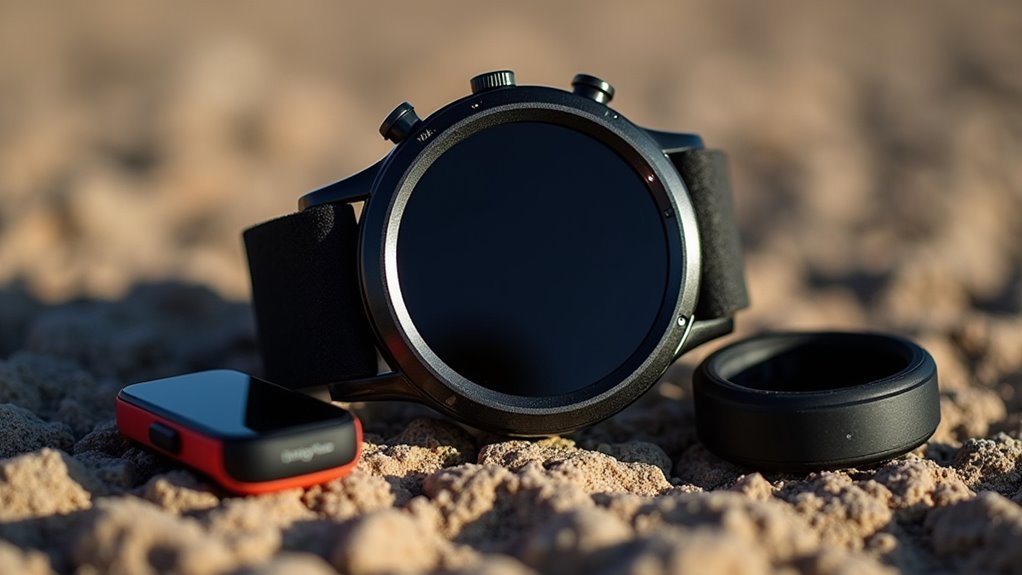
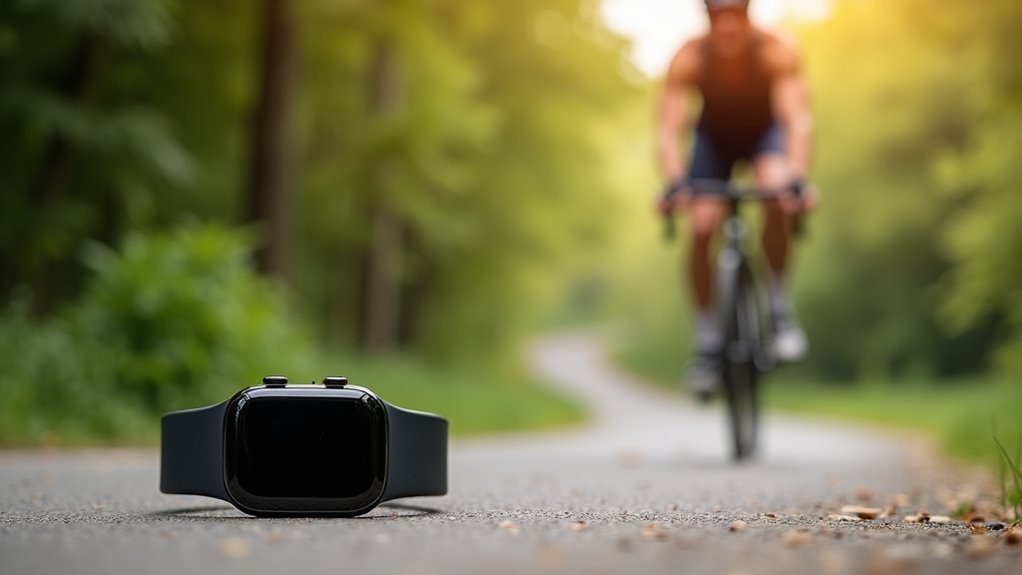
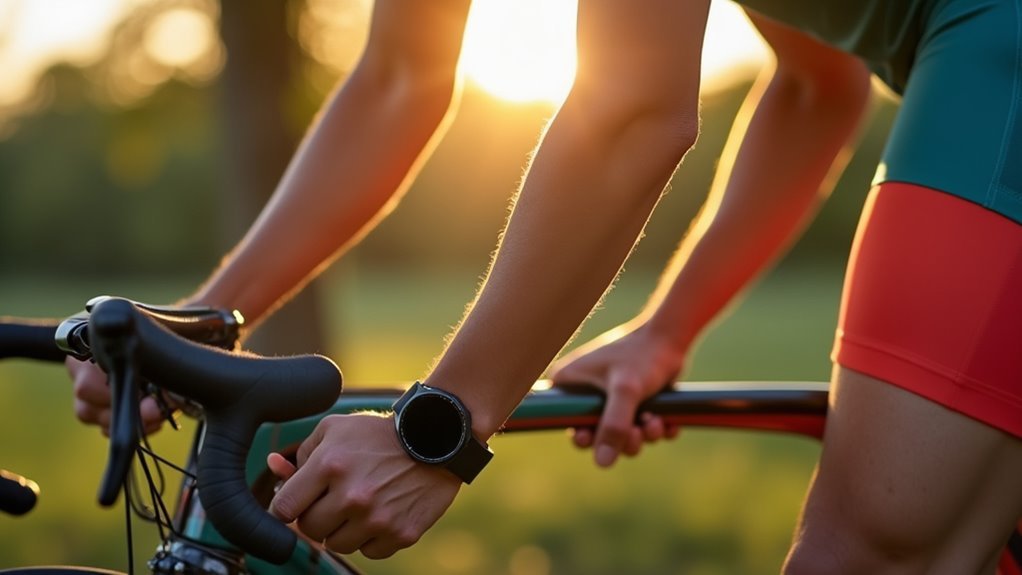
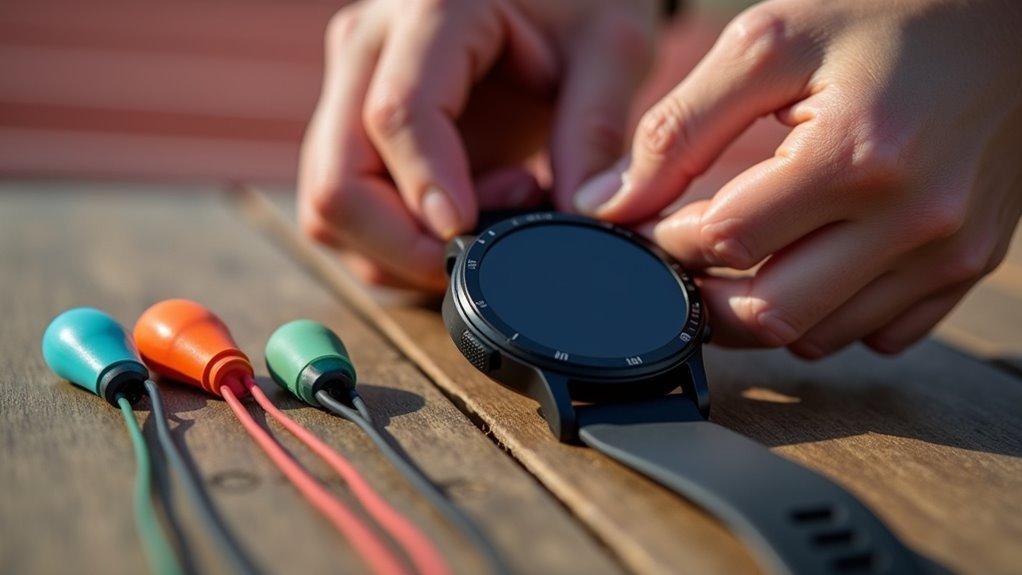
Leave a Reply